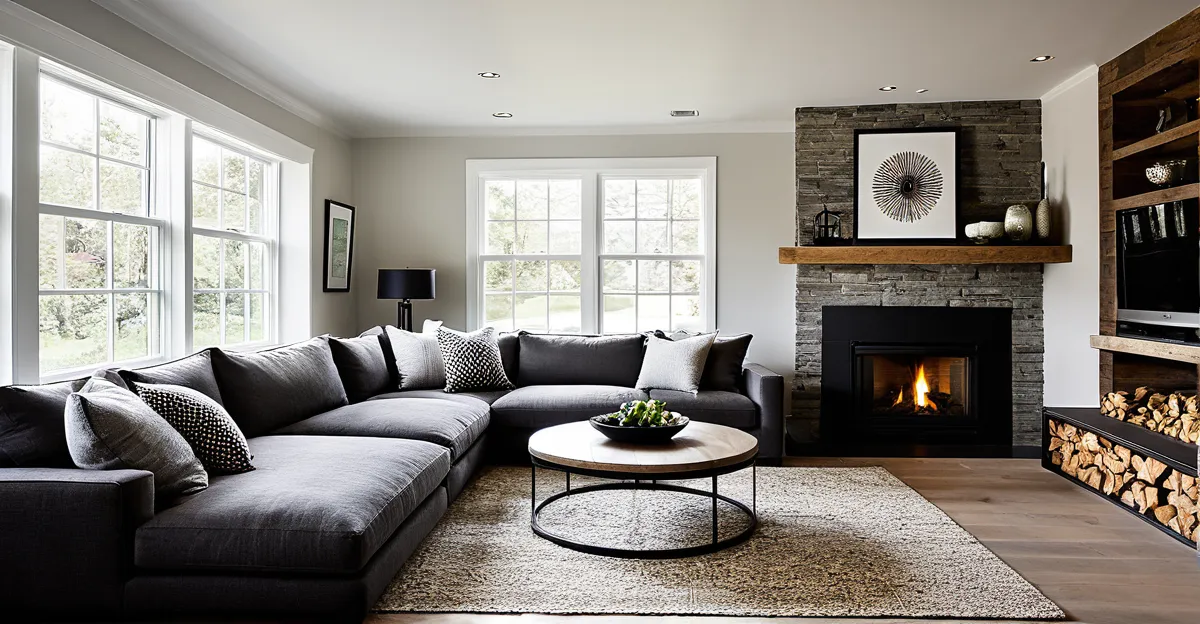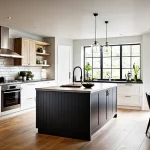Core Principles of an Ideal Home Sanctuary
Creating a home sanctuary begins with foundational home sanctuary principles that prioritize a peaceful home and a nurturing environment. Central to this is the holistic focus on well-being, where every element in the space encourages mindful living. This means more than just aesthetics—it involves intentionally designing spaces that support mental, emotional, and physical health.
To foster such an environment, start by simplifying your surroundings. Minimizing distractions and cultivating order help set the stage for calm. Thoughtful arrangement of furniture to promote flow and comfort enhances both relaxation and usability. Natural light and soothing textures contribute to sensory balance without overwhelming the senses.
Additional reading : Home Renovations: What Are the Latest Trends This Year?
Immediate improvements can include introducing calming rituals, such as dedicated moments for relaxation or reflection, which deepen the home’s nurturing quality. Incorporating plants or natural materials also supports holistic well-being by improving air quality and connecting residents to nature.
By anchoring your space in these principles, you lay a strong groundwork. This results in a peaceful home that not only looks inviting but functions as a true refuge—one where mindfulness and comfort coalesce to create genuine sanctuary.
Also to discover : How Can You Maximize Comfort in Your UK Home Living Space?
Decluttering for Calm and Clarity
Creating an organized living space by decluttering your home is essential to establish mental clarity and foster a peaceful home. Decluttering means systematically reducing physical and visual clutter to create simplicity that supports a calming atmosphere.
Effective methods begin with categorizing possessions into keep, donate, and discard piles. This process requires honest assessment to prioritize what truly serves your well-being. Maintaining decluttered spaces involves daily habits like tidying up surfaces, returning items to designated spots, and regular reviews to avoid accumulation.
By embracing simplicity, you free your environment from distractions that disrupt a nurturing environment. The result is a home sanctuary where focus and calmness naturally dwell, enhancing mindfulness and relaxation.
A clutter-free home also improves cleaning efficiency and maximizes space use, contributing to a healthier, more inviting sanctuary. Decluttering is both a physical and mental act—letting go of excess leads to emotional calm.
Incorporating decluttering as a core routine aligns perfectly with home sanctuary principles—it’s an actionable step anyone can take immediately to deepen their experience of comfort and peace at home.
Integrating Natural Elements Indoors
Bringing nature in home through biophilic design enriches a space with calming energy and tangible health benefits. Indoor plants are a prime example, not only enhancing aesthetic appeal but also improving air quality by filtering toxins. A well-chosen variety of greenery can soften hard edges and add life to any room, fostering a nurturing environment that supports relaxation.
Selection is key: opt for plants suited to your light conditions and maintenance capacity. Popular choices include snake plants, pothos, and peace lilies, known for resilience and air-purifying qualities. Beyond plants, natural materials like wood, stone, and woven fibers create subtle textures that evoke the outdoors. These elements complement natural light, further reinforcing a peaceful home atmosphere.
Incorporating nature in home also means positioning plants to invite views that soothe. Even small touches—like a bowl of river stones or driftwood—can connect you to nature’s calm rhythms. Embracing biophilic design is actionable; it encourages mindful interaction with your surroundings, reducing stress and deepening your connection to the home sanctuary principles that prioritize holistic well-being.
Calming Colour Palettes and Lighting
Choosing calm colors is fundamental to shaping a home ambiance that promotes relaxation and a peaceful home. Soft, muted tones such as pale blues, gentle greens, and warm neutrals naturally induce calmness and reduce mental stimulation. These colors work hand in hand with soothing lighting to create an inviting space that supports emotional wellness.
Layered lighting strategies deepen the feeling of tranquility. Combining ambient light with task and accent lighting allows you to adjust the mood according to time and activity. For example, dimmable lights help transition from bright, functional daylight to softer evening illumination that lowers stress levels. Natural light should be maximized during the day to regulate circadian rhythms and enhance a nurturing environment.
Besides direct lighting, the quality of light—soft, warm hues rather than harsh white or blue—affects how comforting a space feels. Implementing lampshades or light filters can diffuse brightness, making rooms more serene and welcoming.
Understanding that calm colors and soothing lighting are tools for emotional balance empowers you to curate spaces that actively support mindful living and elevate your home sanctuary principles through thoughtful sensory design.
Personalising the Sanctuary Space
Creating a personal sanctuary begins with infusing your home with elements that genuinely reflect your home individuality. This means selecting meaningful decor—items that carry memories, evoke joy, or express your unique style. Personal touches transform a generic space into a heartfelt refuge, increasing emotional comfort and connection.
When arranging furniture, prioritize flow and comfort. Consider how you naturally move through your home and design layouts that support ease and relaxation. Thoughtfully positioned seating, for example, encourages moments of rest and reflection, reinforcing the nurturing qualities of your sanctuary.
Curating objects isn’t about clutter but deliberate choices. Choose decor that resonates deeply—whether a cherished photograph, handcrafted art, or a treasured heirloom. These pieces anchor the space emotionally, grounding mindfulness and calm.
Ultimately, personalizing your sanctuary enhances both its function and spirit. This balance supports home sanctuary principles, offering a peaceful home that truly feels your own. Embracing individuality helps create an inviting environment where well-being flourishes through familiar, comforting surroundings.
Mindful Decoration for Holistic Well-Being
Deliberate choices in mindful decor are essential for fostering intentional living and enhancing a nurturing environment. Selecting art and decorative items that inspire tranquility helps anchor the home sanctuary principles by promoting mental calm and emotional balance.
Incorporate sensory elements like gentle scents—such as lavender or sandalwood—and soft background sounds, including nature recordings or ambient music. These subtle inputs complement the visual calm created by décor, deepening relaxation and supporting holistic well-being.
Creating tranquility involves more than aesthetics; it’s about cultivating a space that encourages mindfulness throughout daily routines. Thoughtful decoration invites residents to pause and engage with their surroundings consciously, reinforcing practices aligned with a peaceful home.
To achieve this, choose pieces that resonate personally or embody peaceful themes, avoiding clutter or overstimulation. Integrate natural elements and soft textures to heighten comfort and sensory harmony.
Ultimately, mindful decoration acts as a tangible expression of home sanctuary principles, shaping a familiar atmosphere where inner calm can flourish. This approach encourages sustained emotional wellness by surrounding you with intentional reminders to live thoughtfully and peacefully.
Promoting Comfort and Practicality
Creating a comfortable home is essential for transforming your space into a functional sanctuary where you can truly relax and rejuvenate. Start by selecting furniture that supports posture and comfort, such as ergonomic chairs, plush sofas, and cushions with adequate support. Soft furnishings like throws and rugs add warmth and tactile softness, enhancing the cozy living atmosphere.
Zoning spaces within your home maximizes both comfort and practicality. Designate areas specifically for relaxation, such as reading nooks or meditation corners, separating them visually or spatially from work or activity zones. This separation helps maintain mental clarity and emotional peace by clearly defining restful environments.
Balancing aesthetics with daily usability ensures your sanctuary remains inviting without sacrificing function. Choose durable materials that suit your lifestyle but also align with your home sanctuary principles of nurturing and calm. Thoughtful placement of furniture encourages easy movement and flow, avoiding clutter while supporting comfort.
By prioritizing comfort and practical design, you create a space that caters to both body and mind, reinforcing a nurturing environment. This approach transforms your home into a peaceful haven where everyday living feels restful and restorative.







